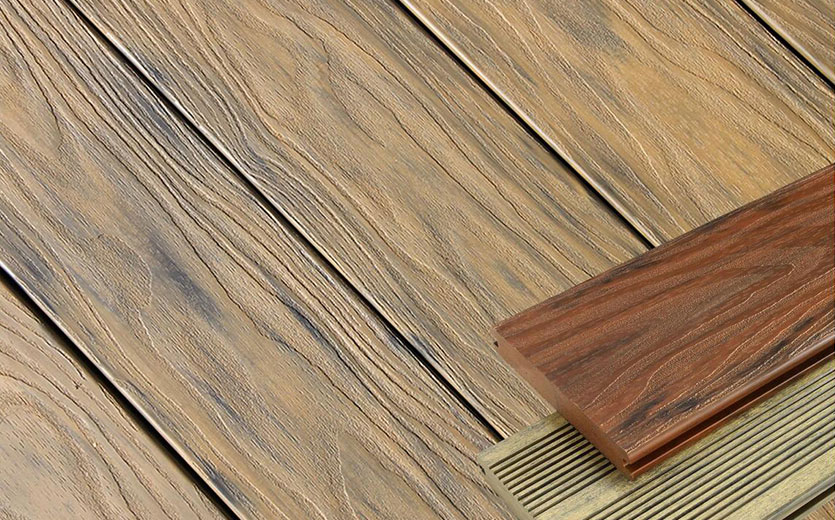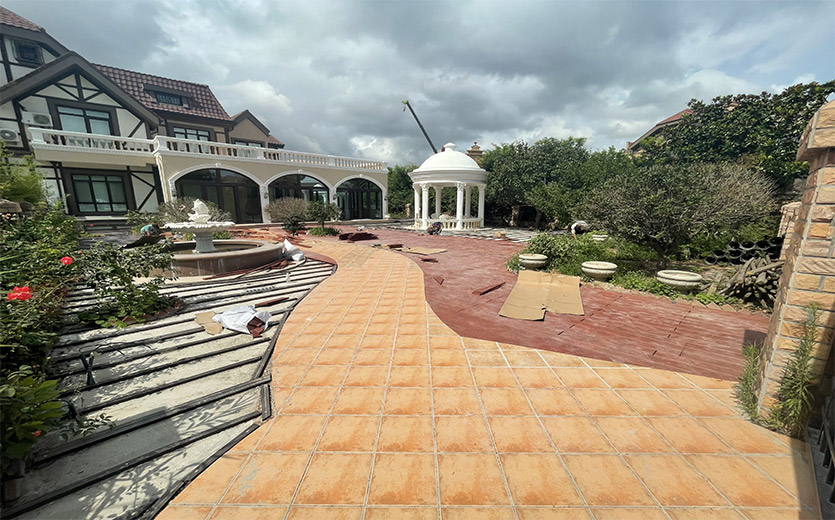
When you decide to build composite decking materials. It is critical to follow the manufacturer’s directions for composite decking. So, what are some of the things we should be aware of?
Some information about build composite decking
When working with composite decking boards, you must always keep thermal expansion in mind. From summer through winter, under most climatic circumstances. Temperature swings are enough to pose issues with outdoor deck spacing. When heated and cooled, composite decking expands and contracts throughout its entire length. With proper space, you will be able to move around without bending.
Some WPC decking materials are intended to be installed using concealed fasteners. These clip systems are typically fastened through each joist to the deck frame and tightly installed in a hollow running the length of the board.
Hollow composite decking products have unsightly open ends that accumulate dust and leaves. The majority of hollow surfacing materials include end caps that can be used to seal the ends. Another option is to cover the open end with a runway or frame pattern perimeter.
Installation precautions
Keeping decking seams under control
When building outdoor composite decking, a space between adjacent decks must be left. This keeps the composite decking from warping as a result of compression after thermal expansion.
Depending on the size and shape of your deck design, this may be a simple task, or you may need to make some changes. On decks more than 20 feet wide, diagonally installing WPC decks may often reduce or eliminate the number of butt joints.
In other circumstances, you may elect to employ dividers to make it easier to produce a consistent seam on the deck surface. This method is used to conceal seams and make them appear to be part of the design.
The double joists are being leveled
To support the composite butt joint, ensure that the two joists are leveled and attached with four screws every 12 inches.
Decking with grooves and hidden fasteners
It is critical to level the joists in order to keep the butt joints at the same height. Use two clips on the double joists when using the hidden fastening system. Make certain that there is at least 1/8 “There should be enough space for the buttocks.
Align the seams over the double joists
Start from the home and tighten the first board to install a Wood plastic composite floor with a hidden fastening mechanism. Screw the hidden fastener clips into the grooves on the top of each joist after that. Then, put the next board’s groove into the clamp and tighten it with a rubber mallet.
A nice-looking deck border
To avoid the final plank from being too narrow, we had to cut the last two boards to the same width to fill the 7-inch opening.
Decking around a railing post on the interior
Cut the decorative wood plastic composite material to fit around the track column. Make careful you leave at least 1/8 of an inch “of the thermal expansion gap In this situation, we’ll conceal the gap with the rail cover and base trim.




Post a Comment